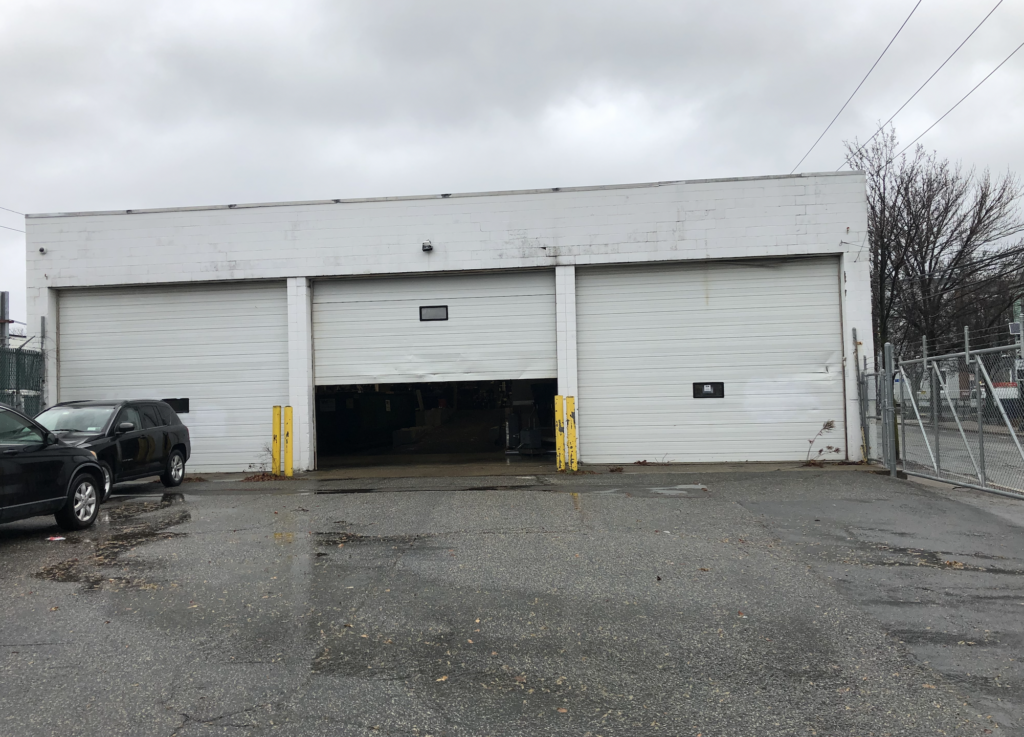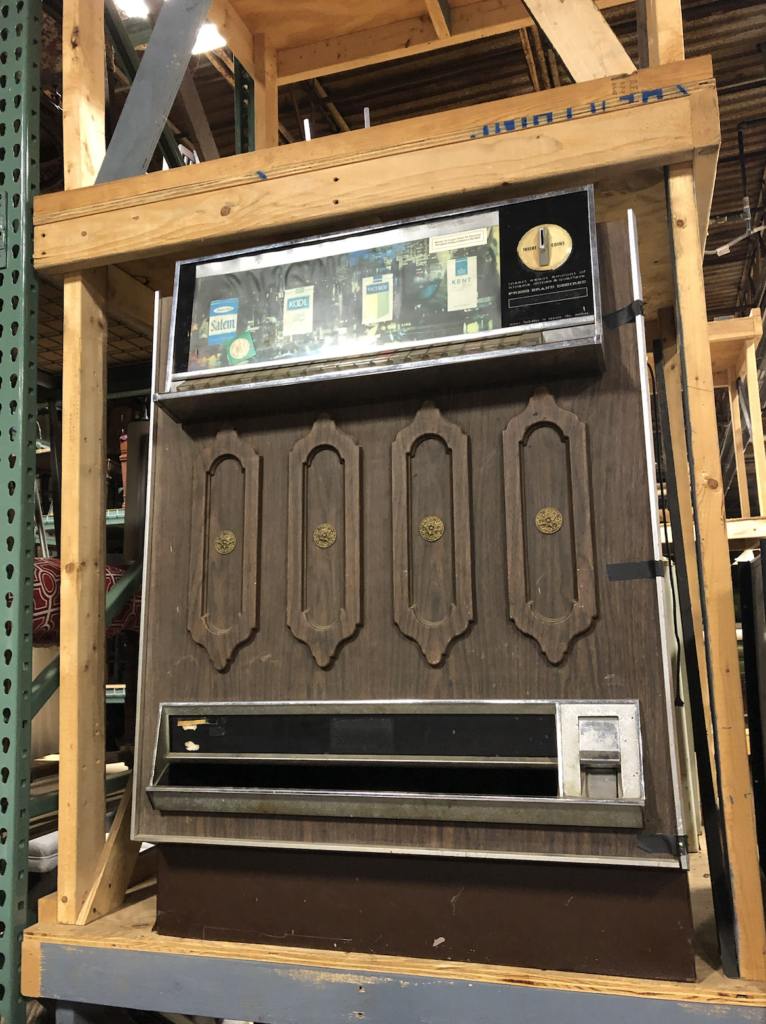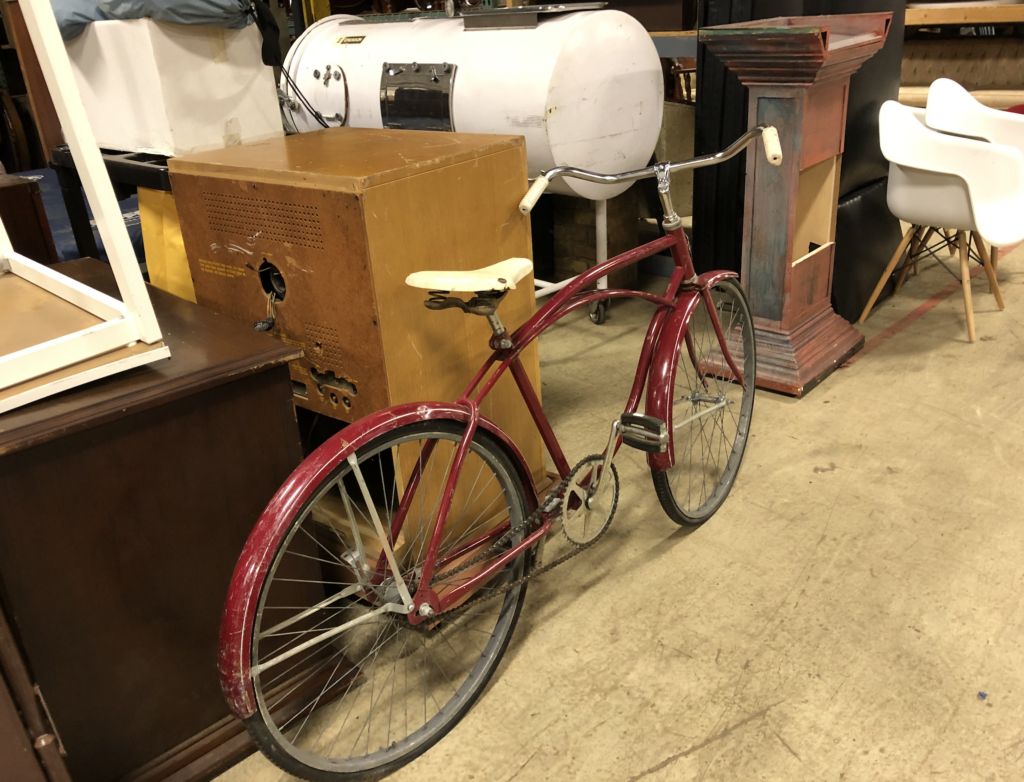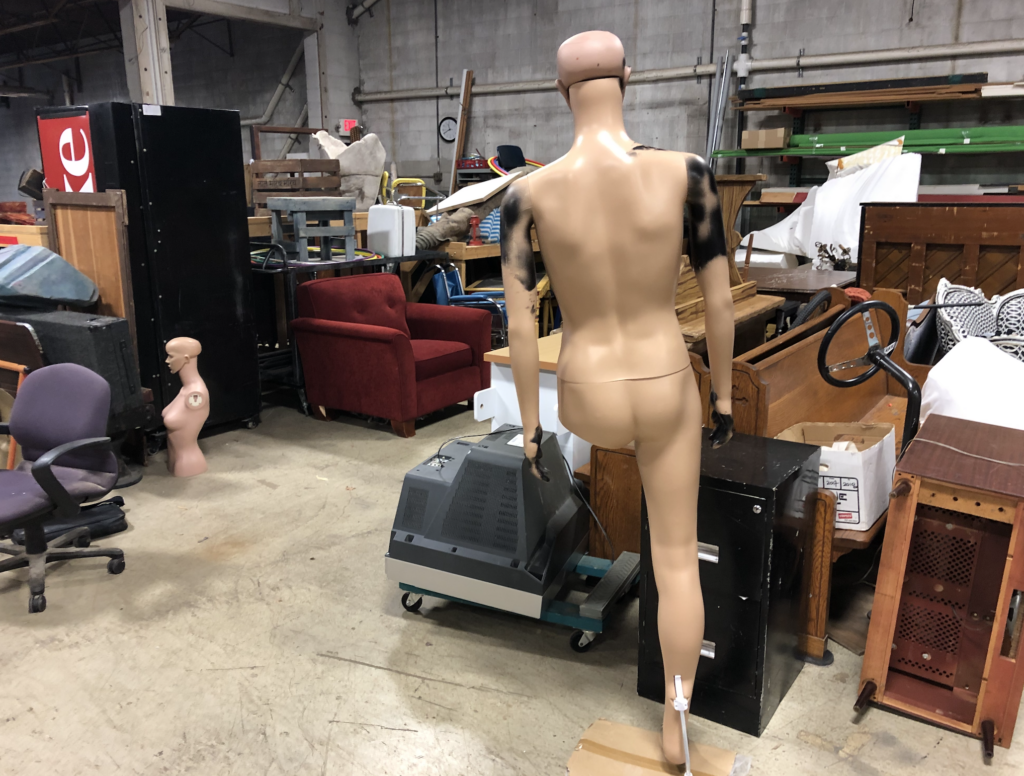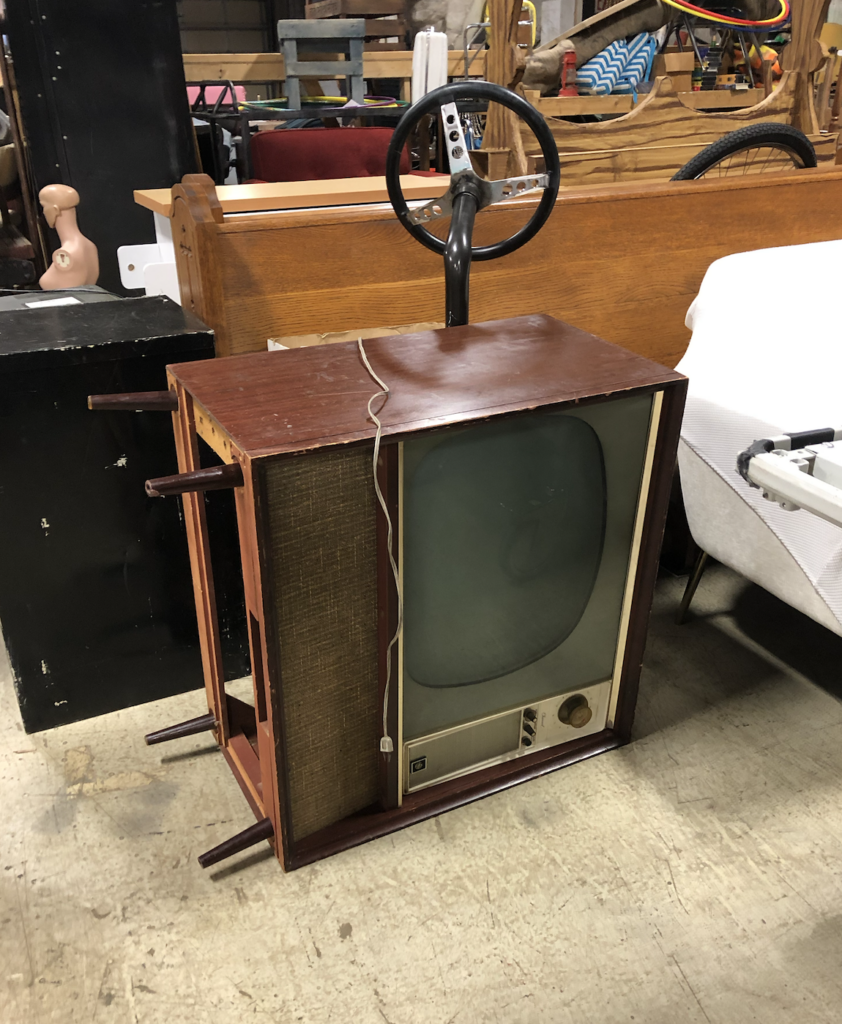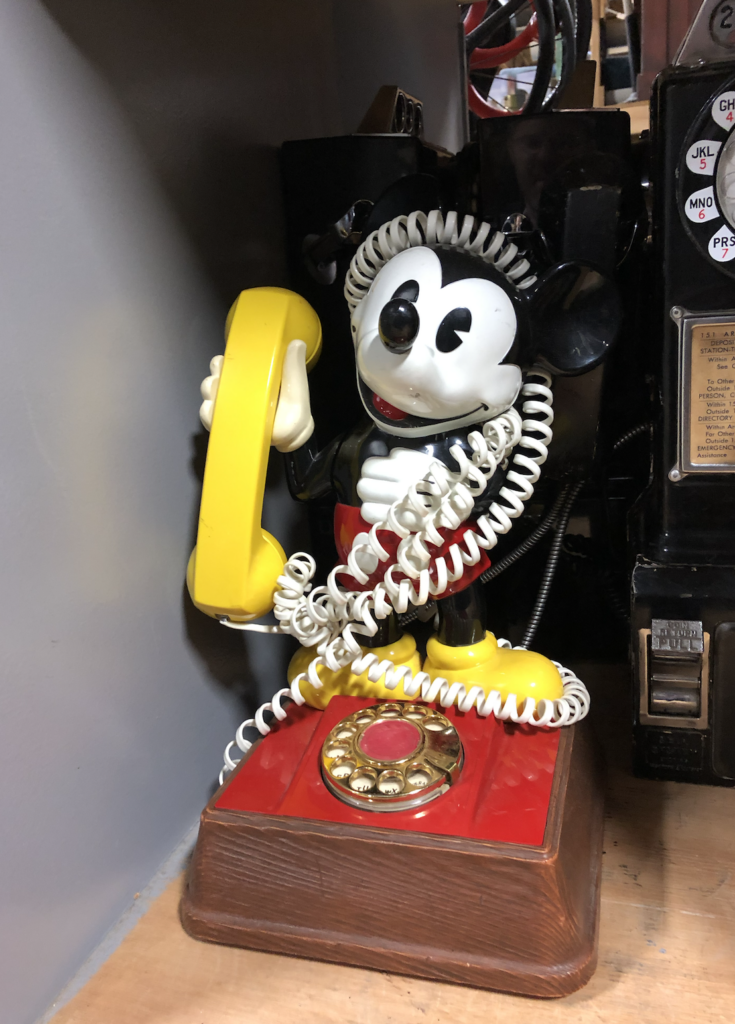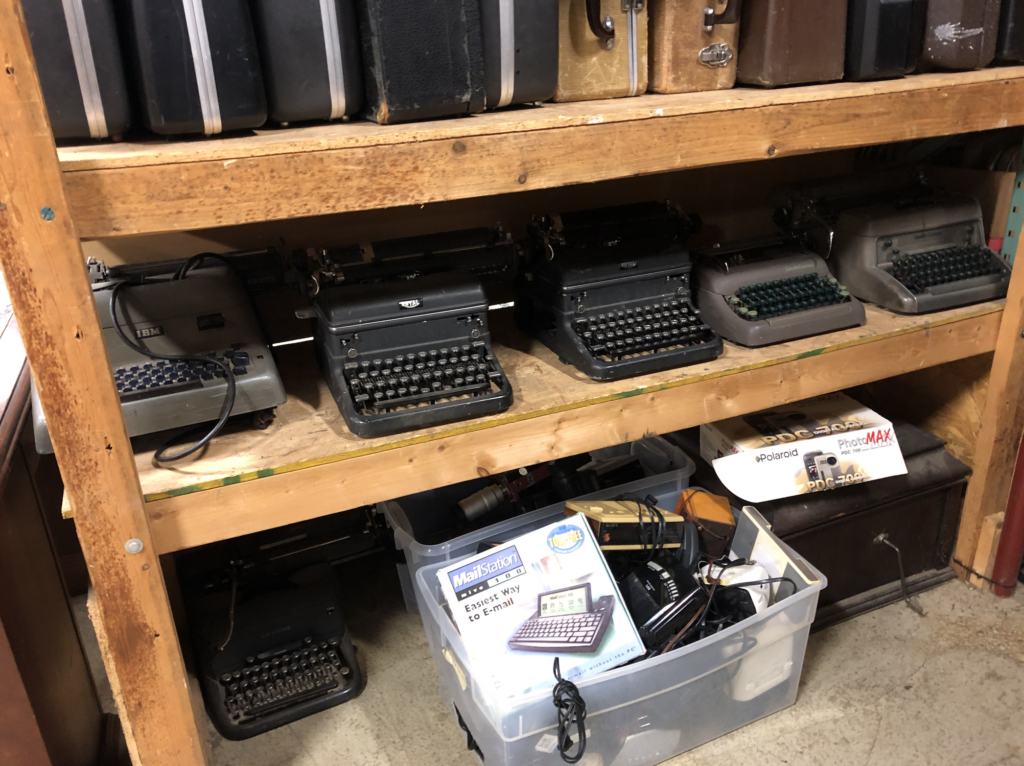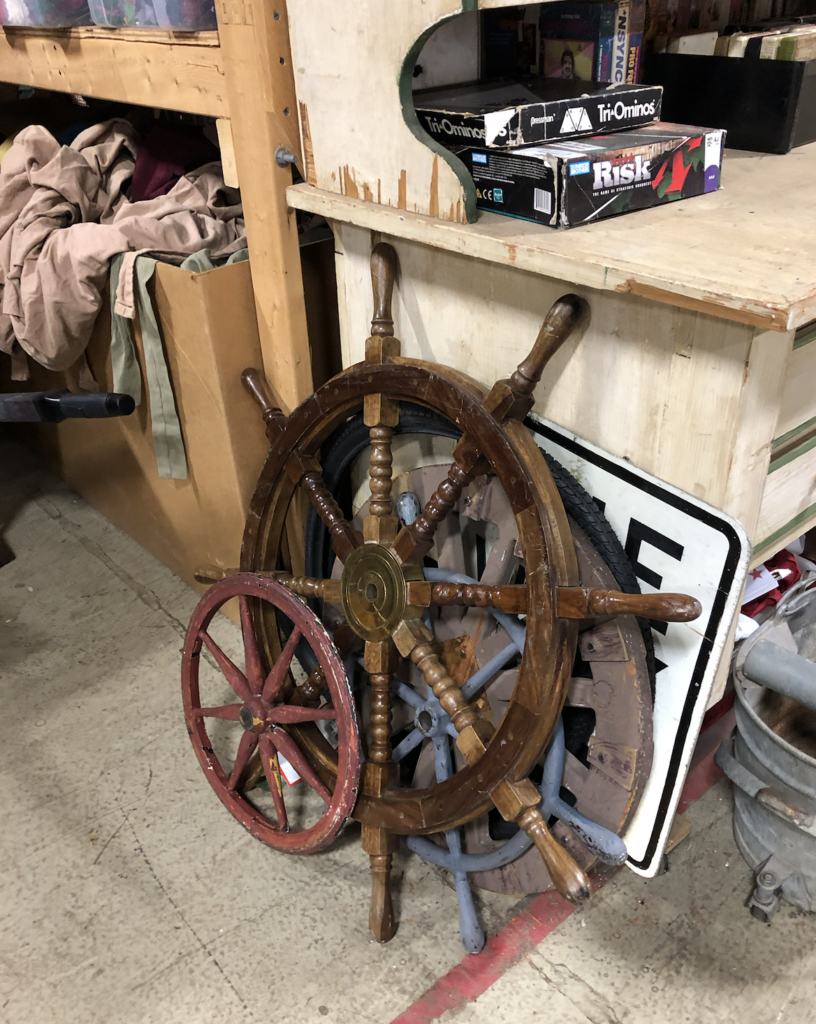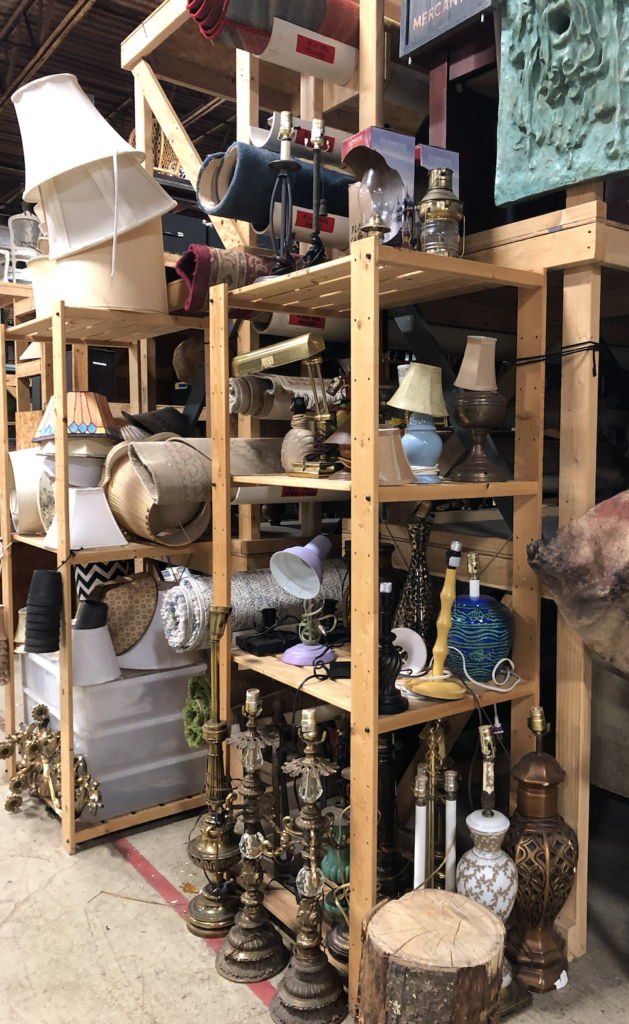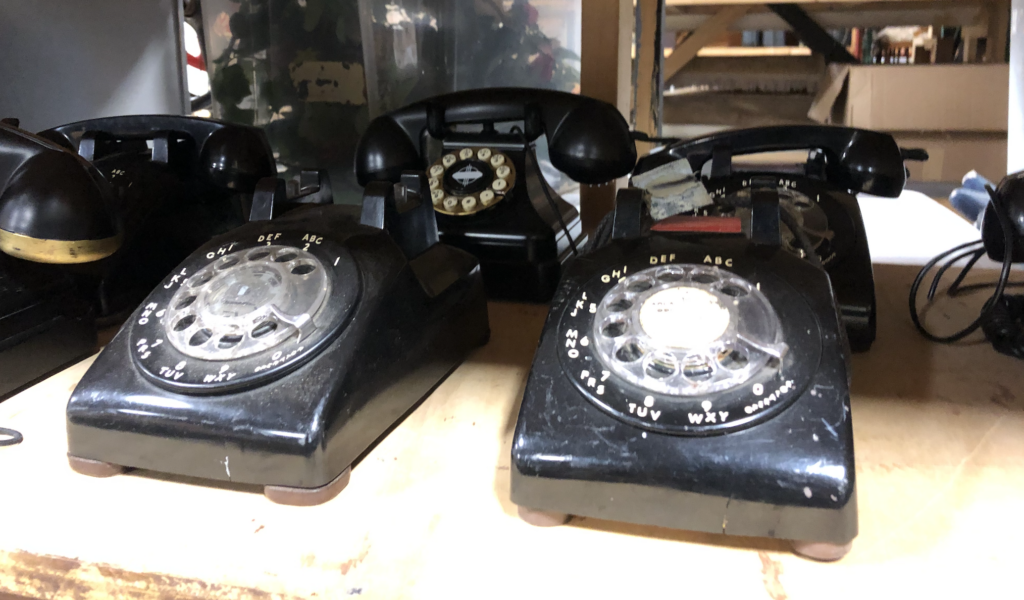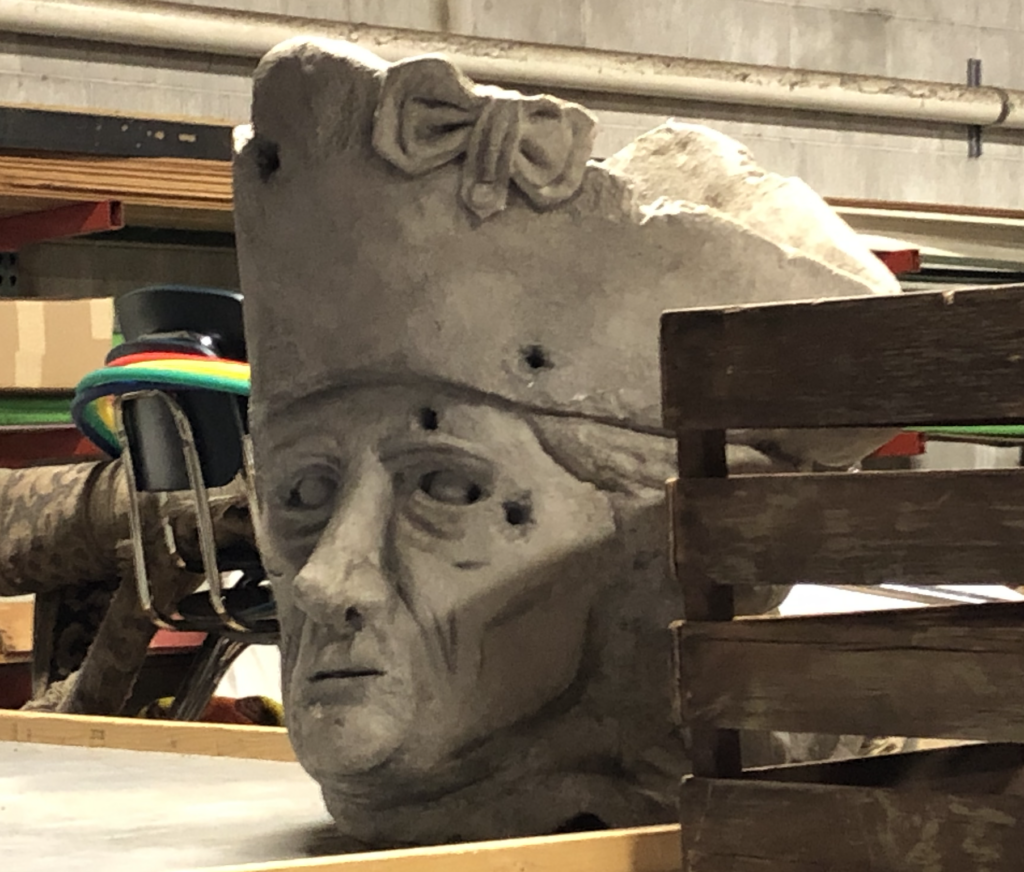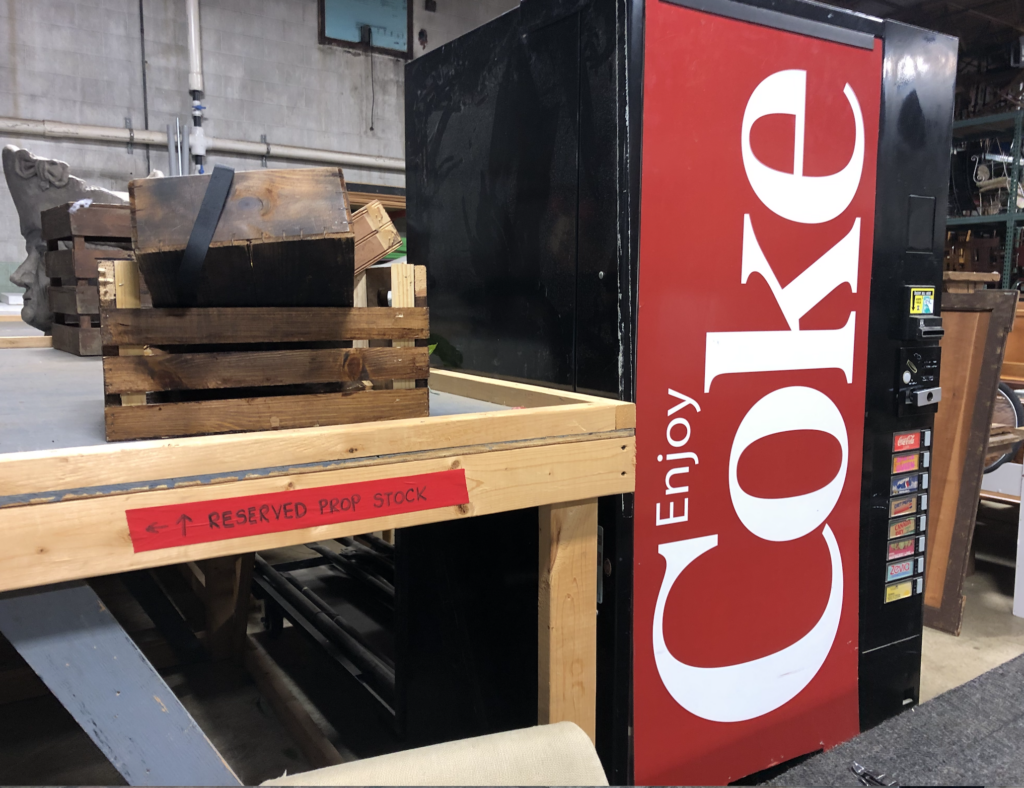Emerson Prop Warehouse is Hidden Gold Mine for Student Productions
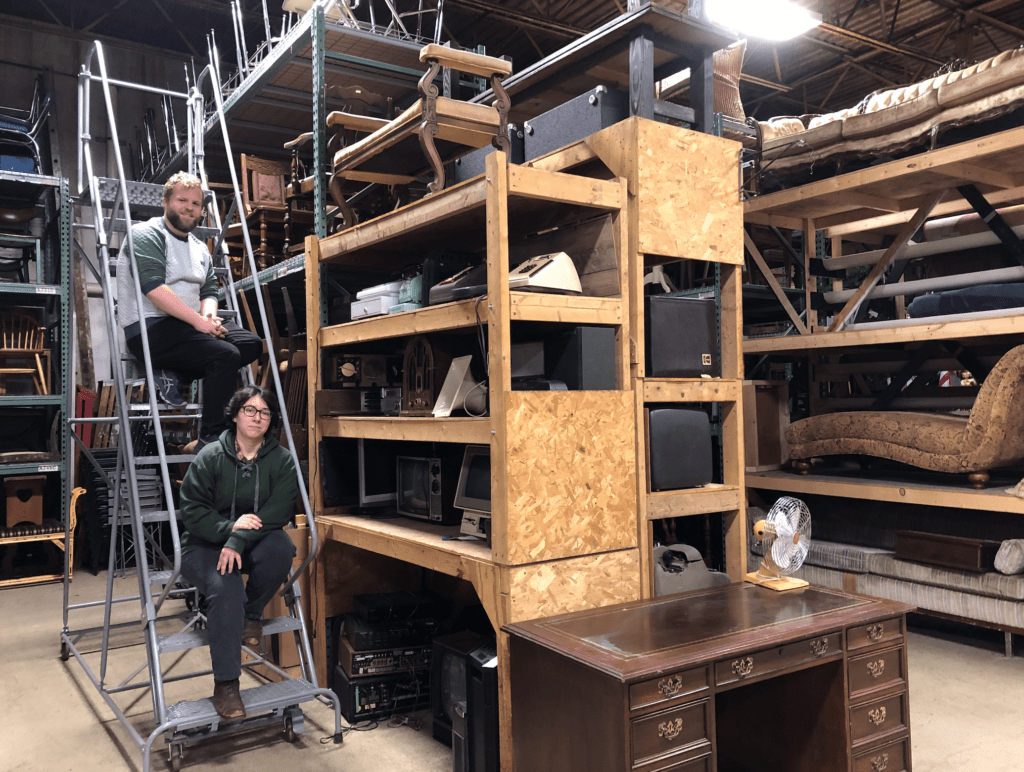
A Civil War-era wheelchair, dismembered mannequins, a Coca-Cola machine from the 1980s, dated rotary phones, an iron lung, and lots and lots of chairs. These are several of the random items stored in Emerson College’s prop warehouse.
“What I really like is when students who’ve never been here come and get really excited to see all the unique items,” said Assistant Prop Director Lauren Corcuera ’17. “Whether they’re looking for something specific or not, you see a spark. Or they say, ‘Oh my, I have to write a screenplay about this couch’ or do a piece with the iron lung.”
Tucked away on a side street in Somerville, Emerson shares its space with a gym. The vast Emerson side is divided between Performing Arts, Facilities, and a few other departments. The Performing Arts section is stocked primarily with stuff accumulated over years of Emerson Stage productions. More props are stored at the Paramount Center.
Props fill large multi-level wooden shelves that reach towards the approximately 40-feet high ceiling. Stacked with dozens of chairs, tables, and sculptures from different eras, Corcuera and Props Director Ryan Bates manage and access the warehouse with rolling ladders or a hand-cranked forklift for the really heavy items.
“A lot of film projects use props from the warehouse; the curricular and extracurricular use is about a 50-50 breakdown,” said Bates. “Student theatre projects, or the occasional print magazine photo shoot, come for set dressing. It is kind of like an Emerson Stage supportive resource that the whole College can use.”
“I call it an object library,” said Corcuera. “Students can take things out like if they were taking out a library book.”
The location isn’t terribly convenient to campus, so borrowing days are designated for anyone from the College to come and take out props. Appointments are necessary, said Bates.
The College maintains an online inventory of prop items which includes photos, general descriptions, dimensions, and relevant time periods (because people look for props from particular time eras for productions). The prop warehouse also takes in props built by students, freebies from sites like Craigslist, and props purchased for specific shows.
Managing the warehouse covers only part of Bates’ and Corcuera’s roles. They also run the Paramount prop shop, creating props for Emerson Stage’s nine shows per academic year. Bates is the prop master for three of the shows, Corcuera is the prop master for two shows, and they advise the student prop masters of the other four.
“The best way to learn to do what we do is [to] do it. You get on-the-job training, especially for props. We don’t do construction of props with a formula. We use lumber, steel, fabric, thread,” said Bates. “We could be using five different types of foam on a project, three different types of glue, sewing spandex onto a sculpting medium.”
When cataloging props, Corcuera loves working backwards to determine why a particular prop is in the warehouse. “What brought it here?” asks Corcuera.
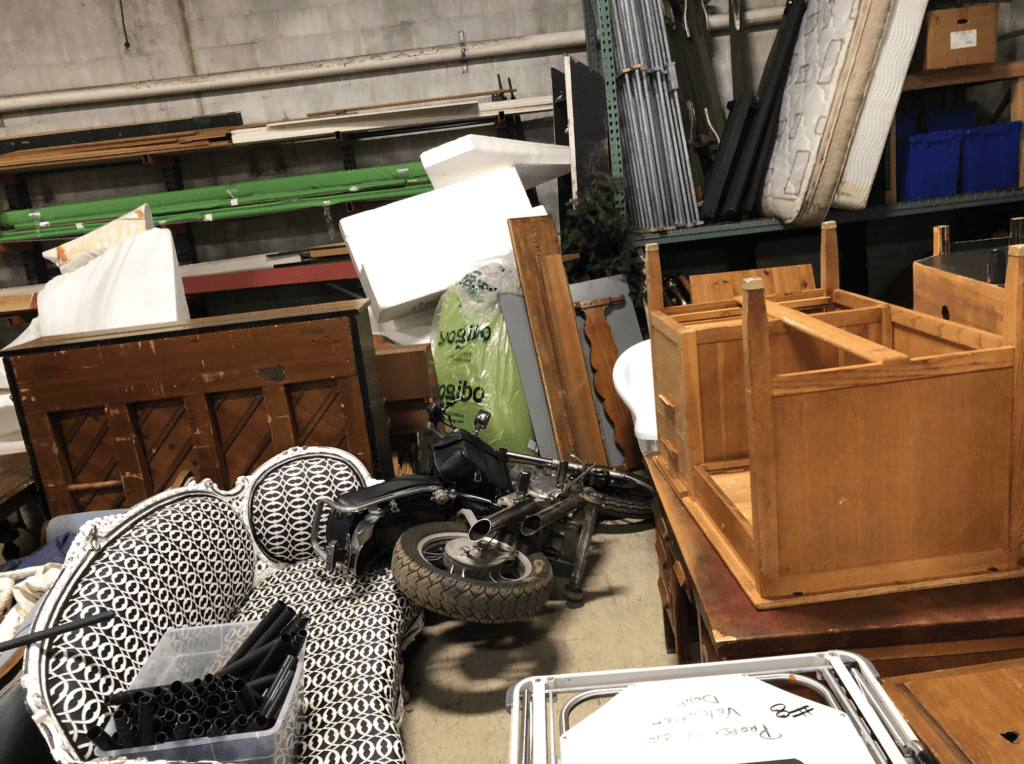
For example, how did the College come to possess an iron lung – a large, heavy cylinder designed to stimulate breathing for patients?
Corcuera said according to lore, a relative of one of the scientists who invented or advanced iron lungs donated it. While that hasn’t been confirmed, coincidentally, an inventor of biomedical devices specializing in respiratory equipment, credited with improving the iron lung in the 1930s, was named John Haven Emerson. (Although there doesn’t seem to be any connection of Emerson to Emerson College).
While the iron lung is real, Bates added you can’t judge a prop merely by its look. Take the motorcycle used for an Emerson Stage production of Measure for Measure. They worked to drop as much weight from the bike as possible, while still retaining its aesthetics and allowing an actor to sit on it.
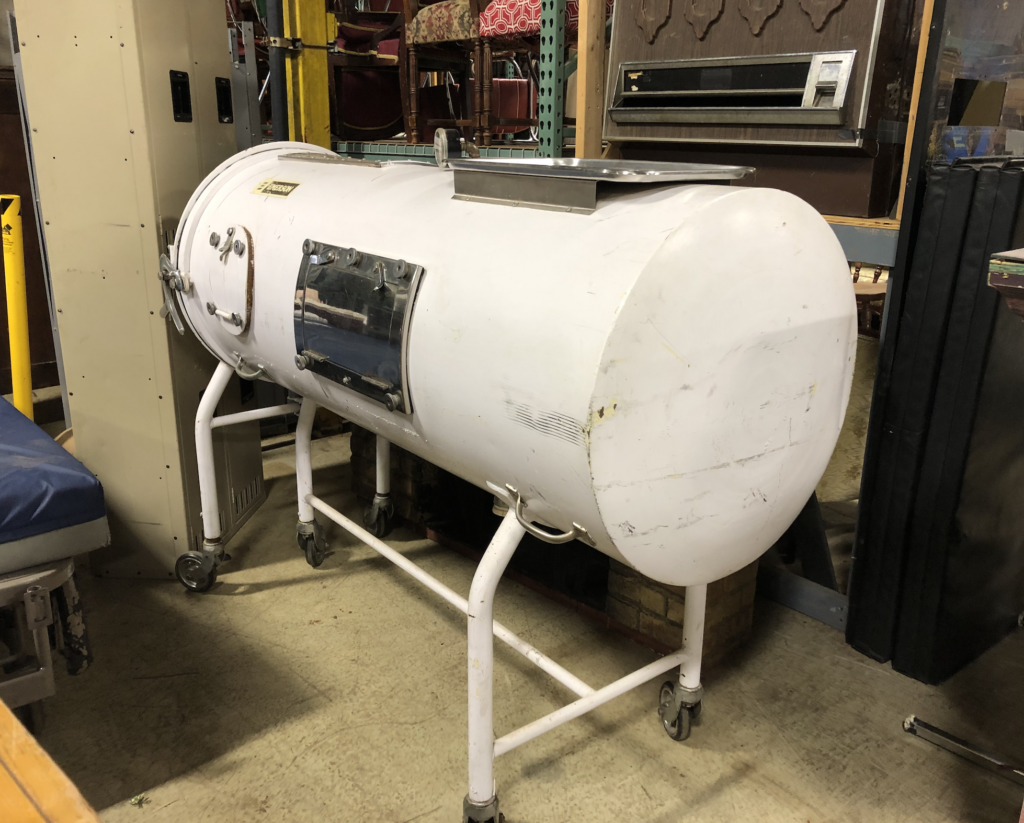
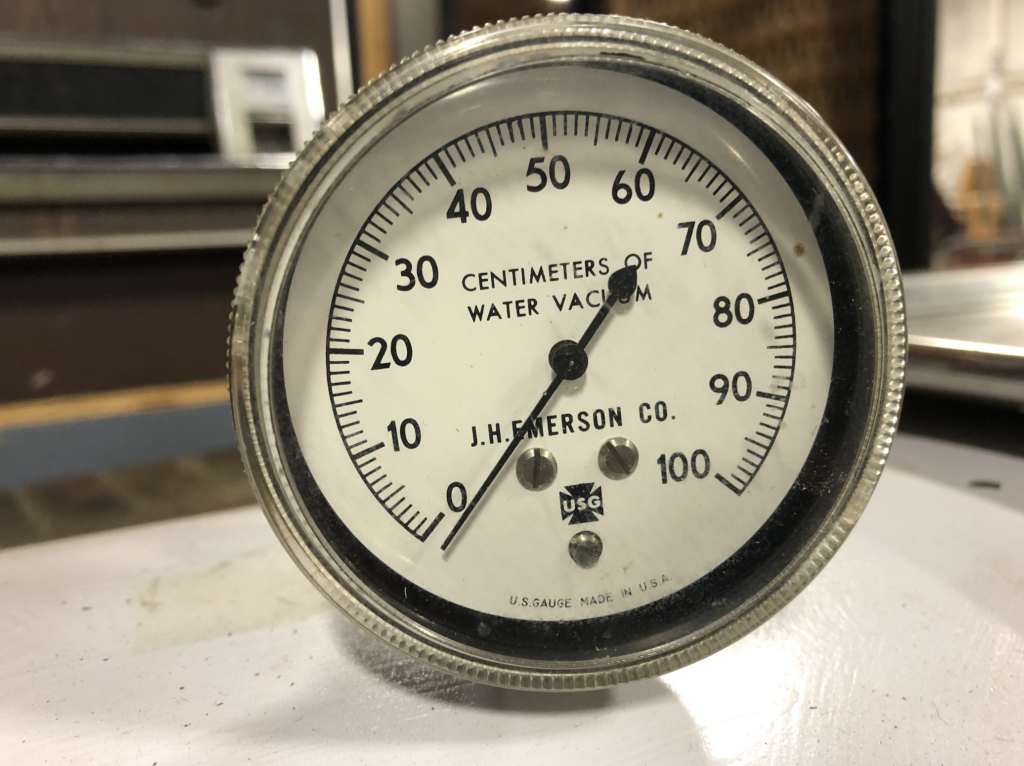
Era-specific furniture and phones are frequently taken out for productions. Corcuera said there’s been a lot of recent student productions set in the 1990s and early 2000s. So Corcuera and Bates educate students on the style of those eras.
“I had to explain what a VHS tape is,” said Bates.
Categories
